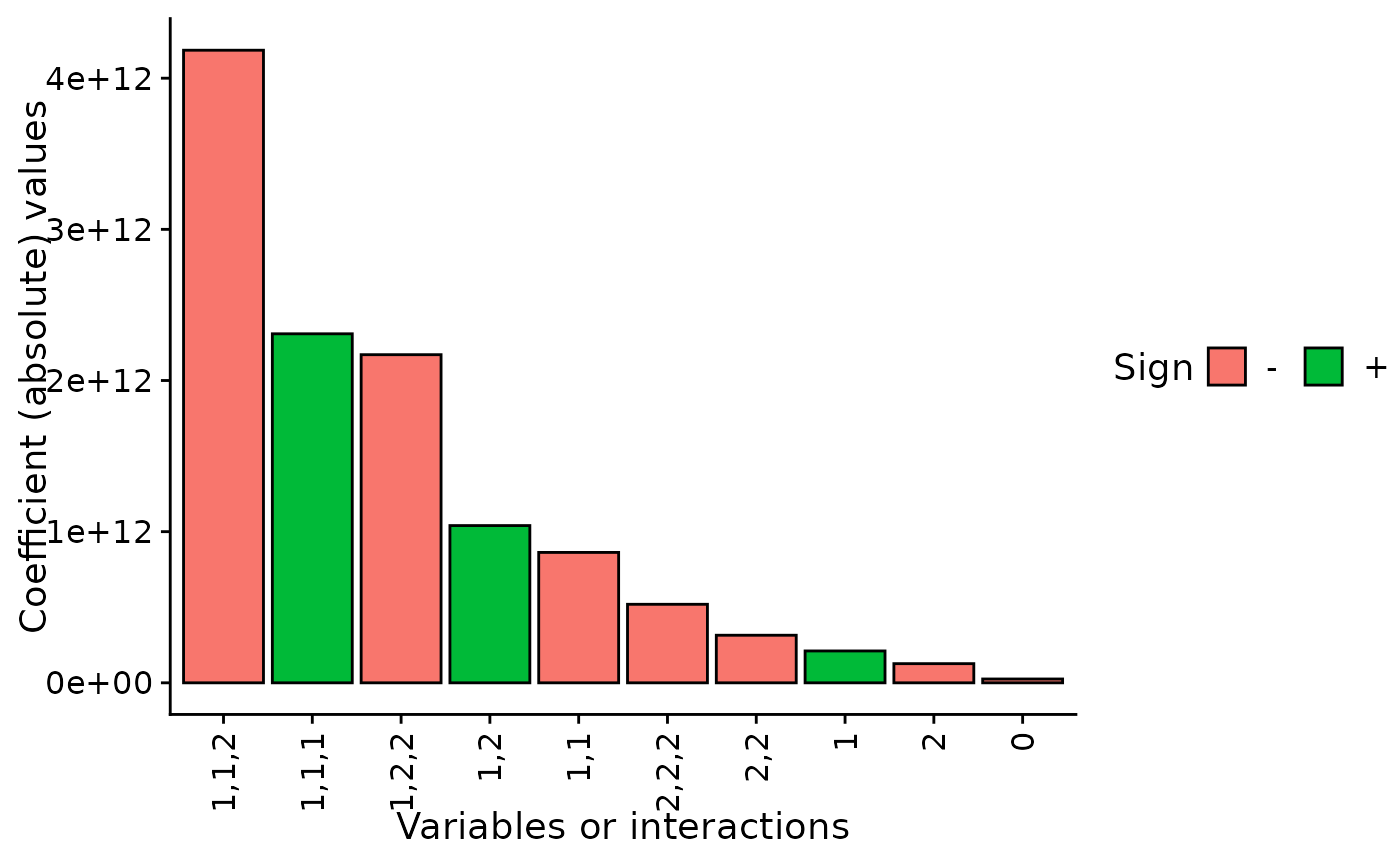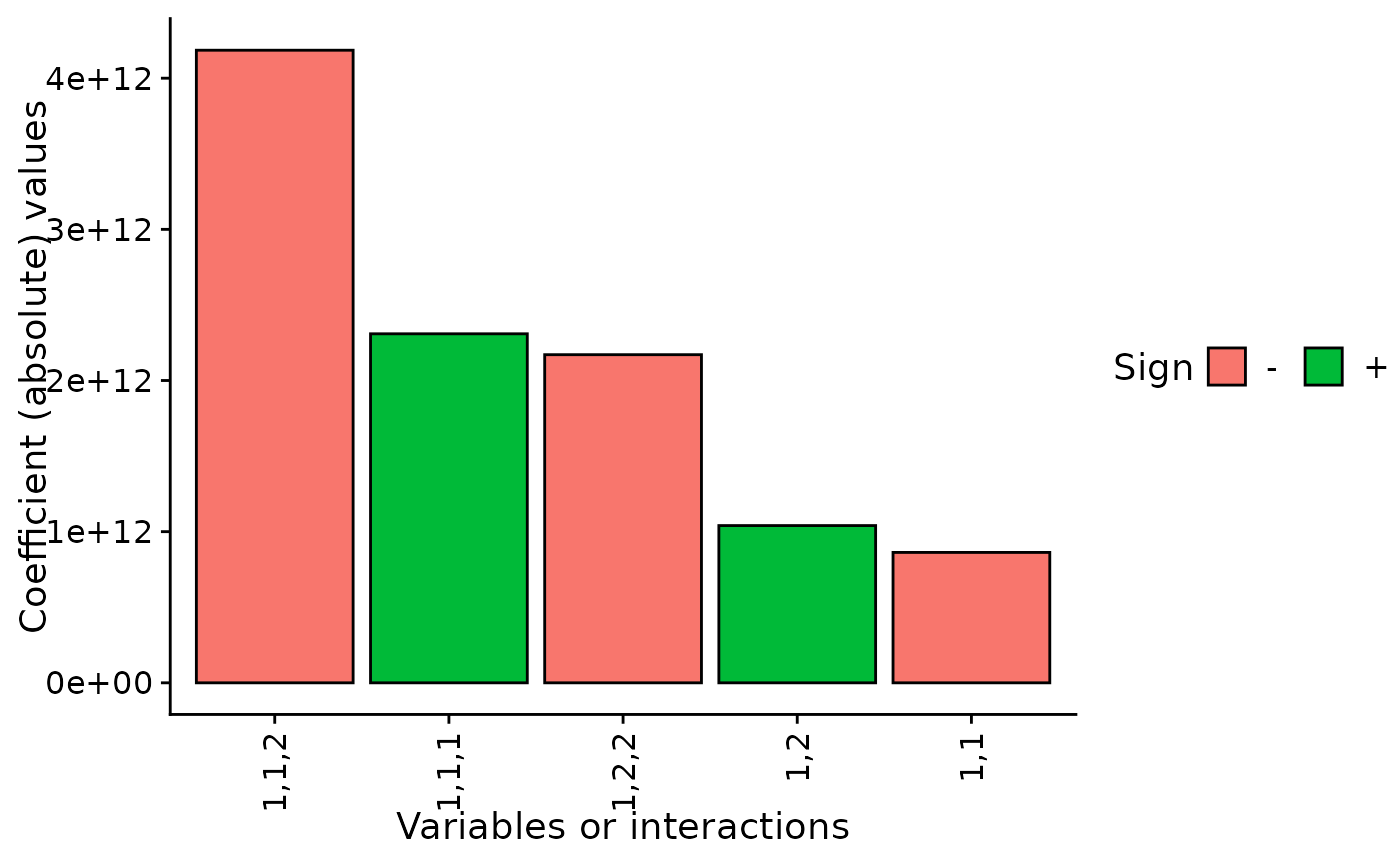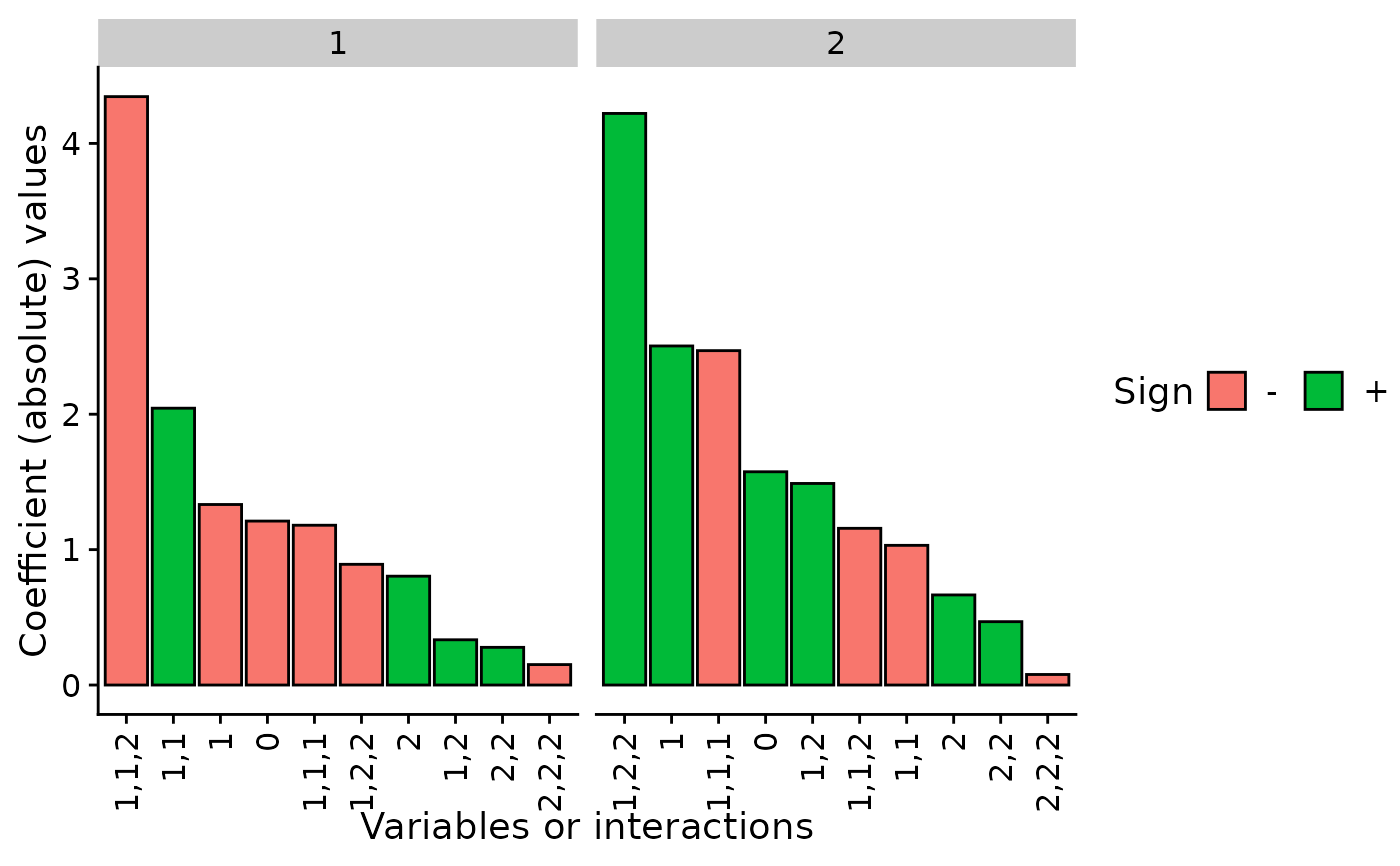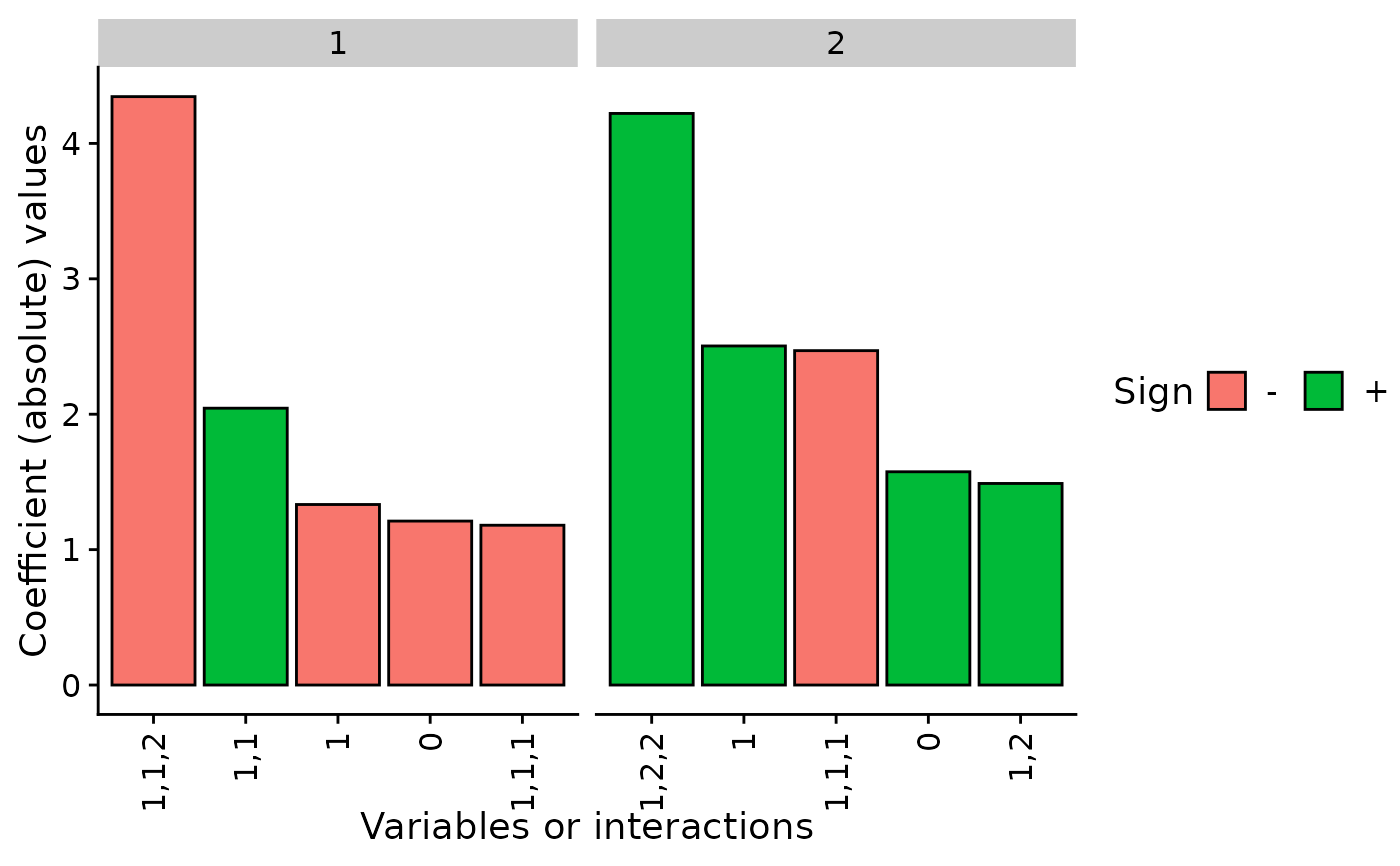A function that takes a polynomial (or several ones) as given by the nn2poly algorithm, and then plots their absolute magnitude as barplots to be able to compare the most important coefficients.
Usage
# S3 method for class 'nn2poly'
plot(x, ..., n = NULL)Details
The plot method represents only the polynomials at the final layer, even if
x is generated using nn2poly() with keep_layers=TRUE.
Examples
# --- Single polynomial output ---
# Build a NN structure with random weights, with 2 (+ bias) inputs,
# 4 (+bias) neurons in the first hidden layer with "tanh" activation
# function, 4 (+bias) neurons in the second hidden layer with "softplus",
# and 2 "linear" output units
weights_layer_1 <- matrix(rnorm(12), nrow = 3, ncol = 4)
weights_layer_2 <- matrix(rnorm(20), nrow = 5, ncol = 4)
weights_layer_3 <- matrix(rnorm(5), nrow = 5, ncol = 1)
# Set it as a list with activation functions as names
nn_object = list("tanh" = weights_layer_1,
"softplus" = weights_layer_2,
"linear" = weights_layer_3)
# Obtain the polynomial representation (order = 3) of that neural network
final_poly <- nn2poly(nn_object, max_order = 3)
# Plot all the coefficients, one plot per output unit
plot(final_poly)
 # Plot only the 5 most important coeffcients (by absolute magnitude)
# one plot per output unit
plot(final_poly, n = 5)
# Plot only the 5 most important coeffcients (by absolute magnitude)
# one plot per output unit
plot(final_poly, n = 5)
 # --- Multiple output polynomials ---
# Build a NN structure with random weights, with 2 (+ bias) inputs,
# 4 (+bias) neurons in the first hidden layer with "tanh" activation
# function, 4 (+bias) neurons in the second hidden layer with "softplus",
# and 2 "linear" output units
weights_layer_1 <- matrix(rnorm(12), nrow = 3, ncol = 4)
weights_layer_2 <- matrix(rnorm(20), nrow = 5, ncol = 4)
weights_layer_3 <- matrix(rnorm(10), nrow = 5, ncol = 2)
# Set it as a list with activation functions as names
nn_object = list("tanh" = weights_layer_1,
"softplus" = weights_layer_2,
"linear" = weights_layer_3)
# Obtain the polynomial representation (order = 3) of that neural network
final_poly <- nn2poly(nn_object, max_order = 3)
# Plot all the coefficients, one plot per output unit
plot(final_poly)
# --- Multiple output polynomials ---
# Build a NN structure with random weights, with 2 (+ bias) inputs,
# 4 (+bias) neurons in the first hidden layer with "tanh" activation
# function, 4 (+bias) neurons in the second hidden layer with "softplus",
# and 2 "linear" output units
weights_layer_1 <- matrix(rnorm(12), nrow = 3, ncol = 4)
weights_layer_2 <- matrix(rnorm(20), nrow = 5, ncol = 4)
weights_layer_3 <- matrix(rnorm(10), nrow = 5, ncol = 2)
# Set it as a list with activation functions as names
nn_object = list("tanh" = weights_layer_1,
"softplus" = weights_layer_2,
"linear" = weights_layer_3)
# Obtain the polynomial representation (order = 3) of that neural network
final_poly <- nn2poly(nn_object, max_order = 3)
# Plot all the coefficients, one plot per output unit
plot(final_poly)
 # Plot only the 5 most important coeffcients (by absolute magnitude)
# one plot per output unit
plot(final_poly, n = 5)
# Plot only the 5 most important coeffcients (by absolute magnitude)
# one plot per output unit
plot(final_poly, n = 5)
